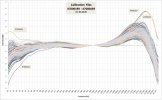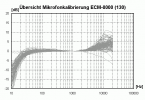stemfencer
Member
- Joined
- Feb 9, 2021
- Messages
- 97
- Likes
- 71
Given this is a forum passionate about measurements, and seems to be more in favour of DSP and room correction methods than other pockets of the internet, I can't find a whole lot about measurement/calibration microphones.
For the average home enthusiast looking to optimise their set-up, besides the advice of get a calibration specific microphone, or just buying a UMIK, is there much benefit going up the chain? Or are the $40 Behringer/Superlux all anyone needs? Obviously we are omitting people aspiring for laboratory grade measurements from this discussion.
Searching around I came across this Jochen Schulz blog post which best addresses the topic. The headline takeaway was anything below 4k Hz the perennial $30 Behringer EMC8000 is more than good enough for the home enthusiast, especially as set-up problems predominately lay in bass region. Has anyone done similar comparisons or experiences with multiple mics concur?
For the average home enthusiast looking to optimise their set-up, besides the advice of get a calibration specific microphone, or just buying a UMIK, is there much benefit going up the chain? Or are the $40 Behringer/Superlux all anyone needs? Obviously we are omitting people aspiring for laboratory grade measurements from this discussion.
Searching around I came across this Jochen Schulz blog post which best addresses the topic. The headline takeaway was anything below 4k Hz the perennial $30 Behringer EMC8000 is more than good enough for the home enthusiast, especially as set-up problems predominately lay in bass region. Has anyone done similar comparisons or experiences with multiple mics concur?





